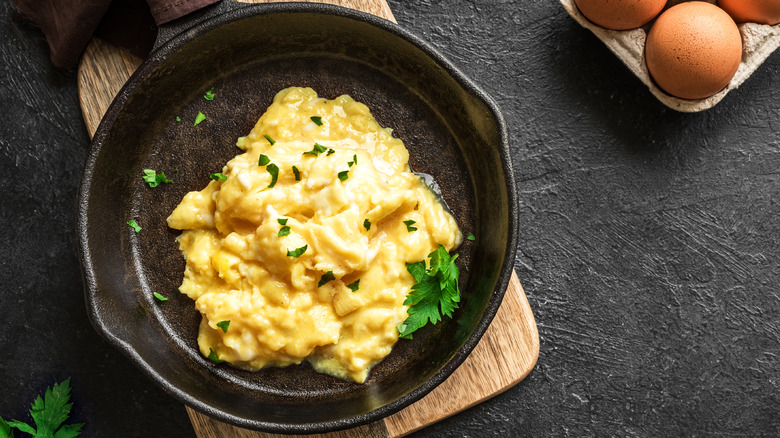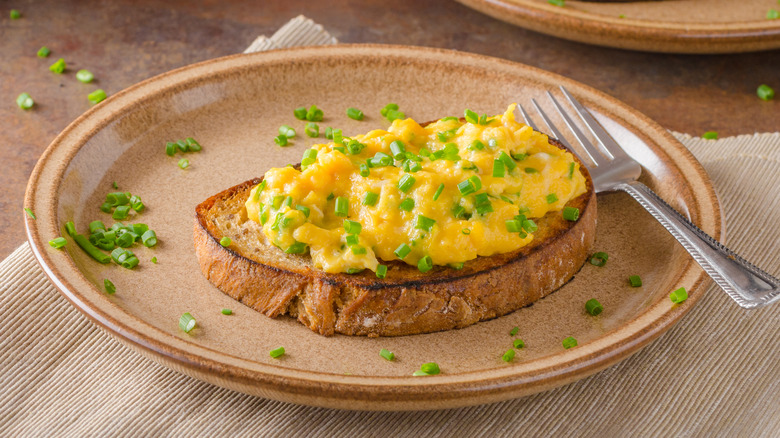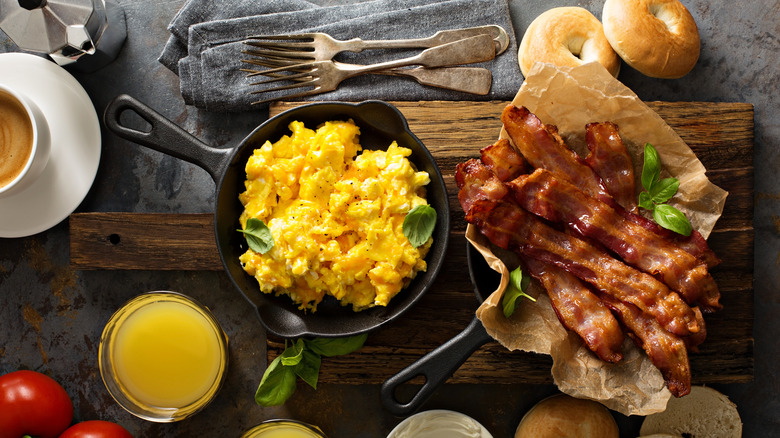English Vs. American Scrambled Eggs: What's The Difference?
The United States and the United Kingdom are united by what cultural commentators call "The Special Relationship." Essentially, this means we have a shared cultural and political bond (per the British Council). The bond is particularly strong among the generations who have grown up adoring the "Harry Potter" franchise. But aside from the geopolitical implications of continued goodwill between the countries, there remain significant differences between American and English culture, which can be clearly illustrated in how we each prepare our scrambled eggs.
There is a fantastic video on YouTube of food superstar Jamie Oliver making scrambled eggs in different ways, including the English Way and the American Way. And what's telling about Oliver's video is just how much of an impact texture and method have on the taste of one's eggs. We'll go over each method in turn, listing the pros and cons of each, starting with the English school.
English scrambled eggs
One of the first things you'll notice when making English style scrambled eggs is the vessel with which you cook them. The eggs are cooked either in a medium saucepan or, as Oliver does in his video, a small pot. Fine Dining Lovers explains the cooking process: The pan is warmed over medium heat and a knob of butter is thrown in. The eggs are beaten with a pinch of salt then cooked in the pan, stirred every few seconds with a rubber spatula to achieve a scramble with a light, but defined curd and a soft, velvety texture.
There are a few pros that come with this technique. If done properly, you get creamy eggs without the need to add cream. They tend towards the fluffier side and create a smooth, rich flavor. Some cons, according to Insider, come with the eggs drying out as a result of overcooking or having the appearance of not being fully cooked. A solution to keeping the eggs moist and fluffy would be to use Gordon Ramsay's method. This involves stirring the eggs in the warming pot, taking it on and off the heat, and adding just a touch of cream at the end to achieve a full bodied, yet air filled egg that is more than luxurious (via YouTube).
American scrambled eggs
Often referred to as "diner eggs," American style scrambled eggs are meant to invoke images of classic diners packed with customers bent over steaming plates piled high with breakfast. The chief cooking tool used in virtually every American diner is the flat-top griddle. So, when making eggs at home you'll want a decently wide, flat pan to achieve the desired "diner eggs" effect. The process, via Fine Dining Lovers, begins with your standard mixing of eggs, salt, and pepper and placing them in the preheated, buttered pan. As the eggs cook, gently fold them over to create a ribboning effect. Continue folding until the eggs are cooked through completely. The folding of the eggs creates the illusion heft, while actually being quite light and fluffy.
Insider again provides us with some pros and cons for this method. One pro is the speed of the cooking. You go from raw eggs to cooked eggs in about one minute. The biggest cons are, unfortunately, that this process can result in a scramble with very little nuance in flavor and can easily become overdone if you're not paying close enough attention.
The goal, as Oliver states in his video, is for eggs that are delicate, yet substantial.


